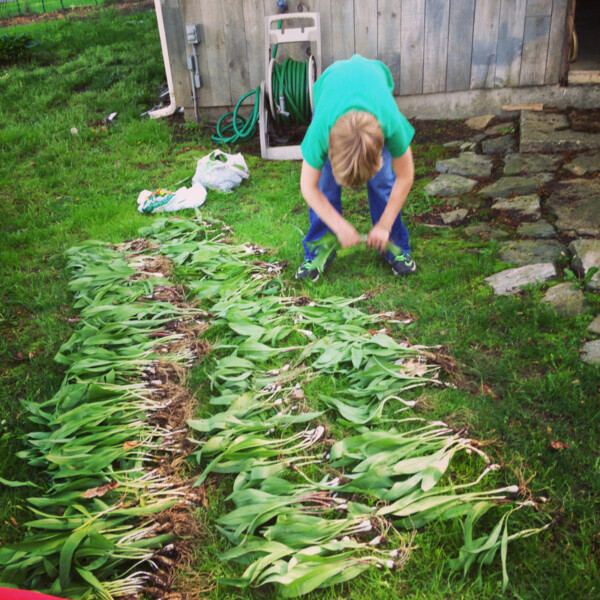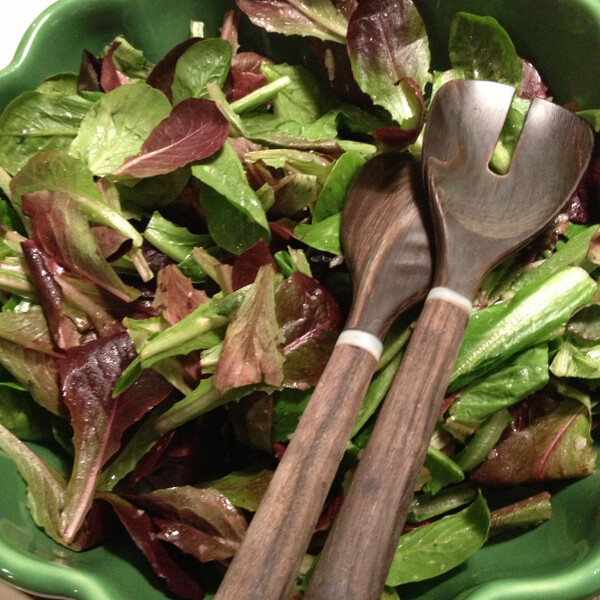How to Eat Honeycomb
on Nov 08, 2024
This post may contain affiliate links. Please read our disclosure policy.

Honeycomb is quite literally where bees live! When beekeepers harvest honey, they sometimes choose also to gather pieces of honeycomb to sell to hungry honey aficionados. It’s much more difficult for bees to produce beeswax than for them to make honey, so it should be enjoyed as a special treat.
Honeycomb is made from hexagon-shaped cells of wax arranged into structurally supportive patterns, which gives it a distinctive, special look. That means that honeycomb slices are fascinating to look at, super sweet, and entirely edible. They are a fabulous addition to any cheese platter or graze board!
By signing up, you agree to our Privacy Policy.
What's In This Post?
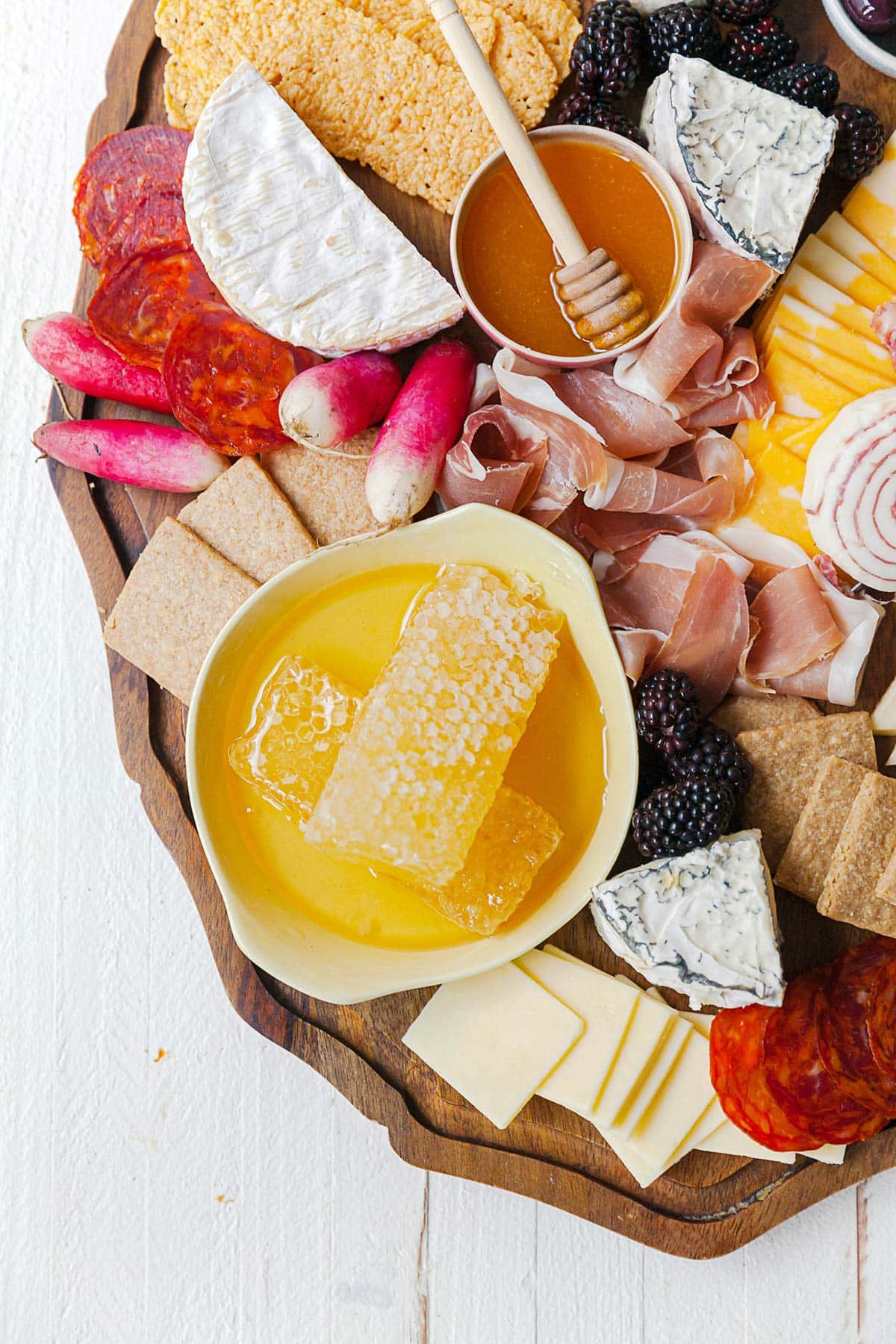
What Does Honeycomb Look Like?
Honeycomb is immediately recognizable by its hexagonal cell structure. It is a beautiful amber color, and you can see all the oozy honey goodness within the cells from the outside.
When honeycomb is sold, it is usually packaged in clear plastic boxes or jars to showcase its structure. To find the freshest, highest quality honeycomb, shop at farmers markets or specialized bee farms called apiaries — commercially packaged honeycomb is also available in regular supermarkets.

What Does Honeycomb Taste Like?
Honeycomb is, first and foremost, sweet. The honey contained within your honeycomb is a wonderful sweetener and a great alternative to sugar because of its more golden, earthy taste.
Honeycomb is also made up of beeswax, which has a chewable texture but not a lot of flavor. If you’re eating the honeycomb on its own, the beeswax will just taste like wax after you’ve chewed out all the honey. If that’s not your thing, you can just spit it out. It is, however, safe to eat.
What Are the Benefits of Eating Honeycomb?
It is widely believed that eating honey will help cure a sore throat. This is because it contains bee propolis, a mixture of bee saliva, wax, and natural substances that bees collect on their travels. (Yes, nature is wonderful and crazy, and we need to embrace that.) Bee propolis causes honey’s natural throat-coating texture, and many believe it has other medicinal effects, such as the capacity to calm irritated throats, runny noses, and frequent sneezing.
In general, raw honey is the healthiest sweetener to use. According to Pass the Honey, its glycemic index (GI) levels are far below those of sugar, so it’s a good option for those with diabetes or other blood sugar-related issues (talk to your doctor, of course), and it also contains several essential vitamins and minerals, such as calcium, magnesium, iron, zinc, and vitamins C and D.
How To Prepare and Eat Honeycomb
Some people might find this surprising, but you can actually eat the entire honeycomb! Honeycomb contains raw honey, meaning honey that hasn’t been treated for commercial use. Raw honey is more viscous and thicker than commercial honey but just as delicious (many believe more delicious and healthful).
Meanwhile, the waxy walls of the honeycomb are chewy and can be digested. To eat honeycomb on its own, you can simply cut off a rectangle of the comb, pop it in your mouth, and chew it like gum!
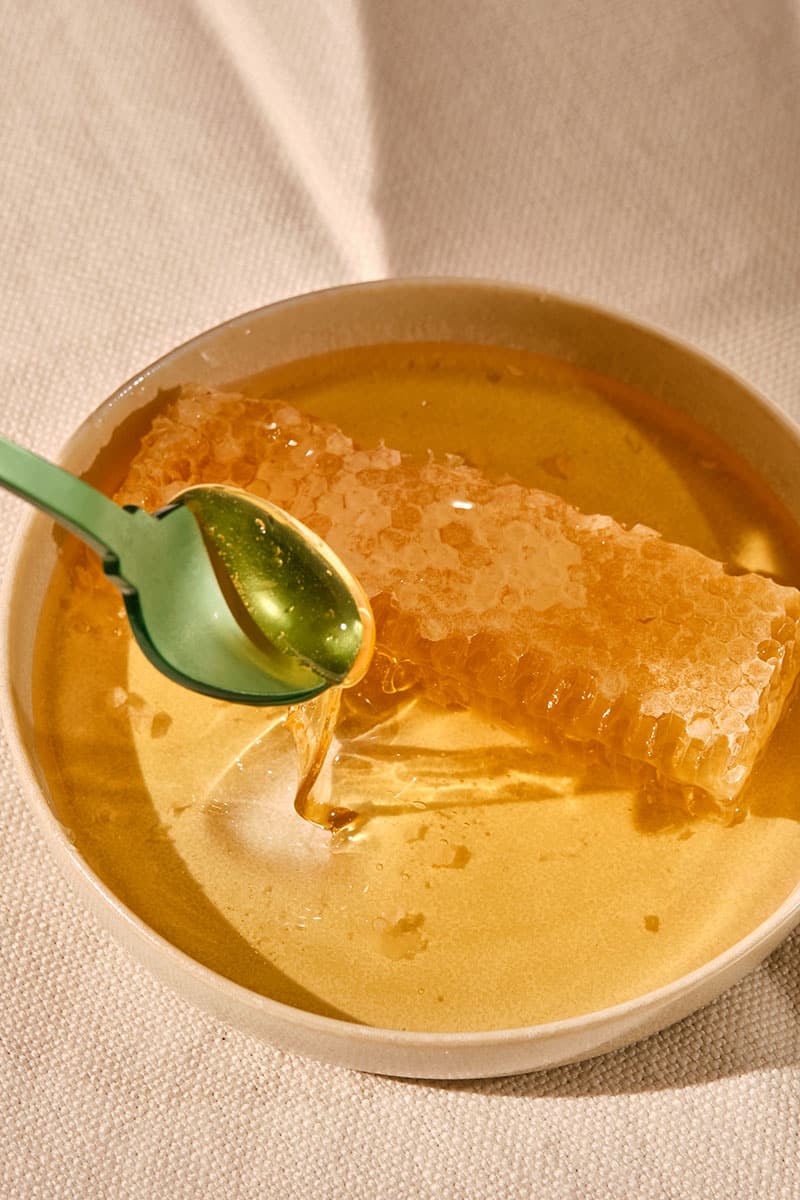
There aren’t many recipes that contain honeycomb because it is such an alluring stand-alone ingredient. Also, it’s difficult to incorporate it into a dish. With that said, honeycomb goes great with many flavors, such as spreadable cheeses and jams. It’s a beautiful way to spruce up an open-faced sandwich. Just add little cubes.
When you combine honeycomb with other ingredients, the wax flavor tends to get lost, and it’s easier to stomach just swallowing the whole thing. Keep the pieces small.
How to Store Honeycomb
The biggest struggle you’ll have with storing your honeycomb is — as you can probably guess — its stickiness! Make sure you’re sealing the honeycomb in an airtight package with no holes because if there’s a hole, that honey WILL seep out.
You should keep your honeycomb at room temp. The most important thing here is to avoid exposing your honeycomb to moisture because wetness is the only thing that can cause the honeycomb to go bad. Toss honeycomb with signs of mold or moisture.
If no water gets into your honeycomb, it will quite literally stay good forever — this ingredient has an unlimited shelf life!
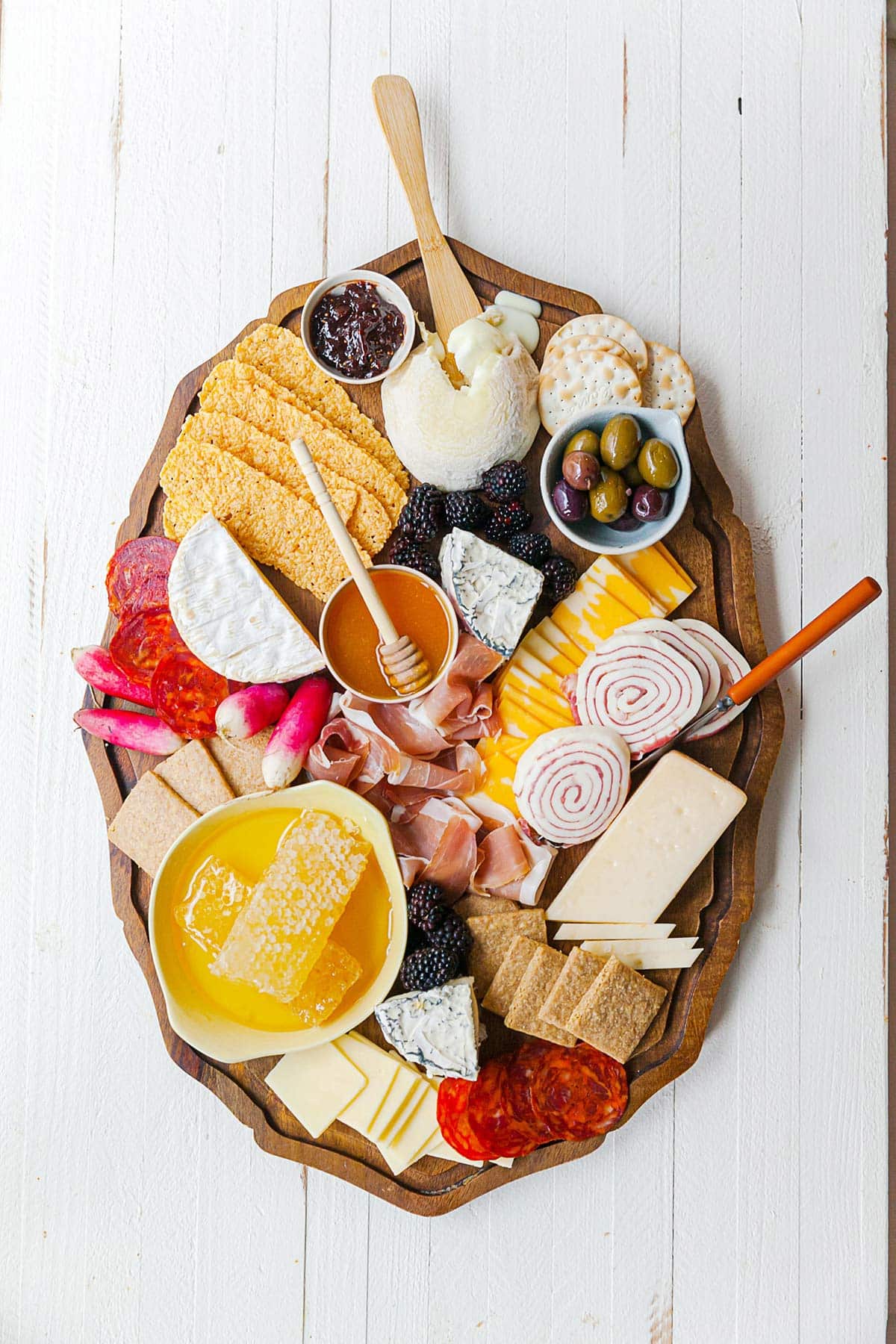
Fun Facts About Honeycomb
Did you know that some varieties of wasps can create honeycombs, too? These knock-off honeycombs are made of paper instead of beeswax and are never harvested and sold to the honey-eating public.
Here are some other fun facts to boost your honeycomb knowledge:
- The honeycomb where bees store their larvae is called the “brood comb.” Brood comb can be distinguished from regular honeycomb because it actually becomes darker from all the foot traffic from the bees, which beekeepers call “travel stain.”
- The beekeeping community is very intense. Some honey producers choose to water down the purity of their product by adding unnatural sugars; these companies are often accused of “honey laundering.” (It’s a thing!)
- Honey bees produce wax by eating honey, which is so cyclical it feels crazy. But it isn’t easy: to create 1 pound of wax, they need to eat 8.4 pounds of honey! This is why honeycomb is less readily available and why it costs so much more.
